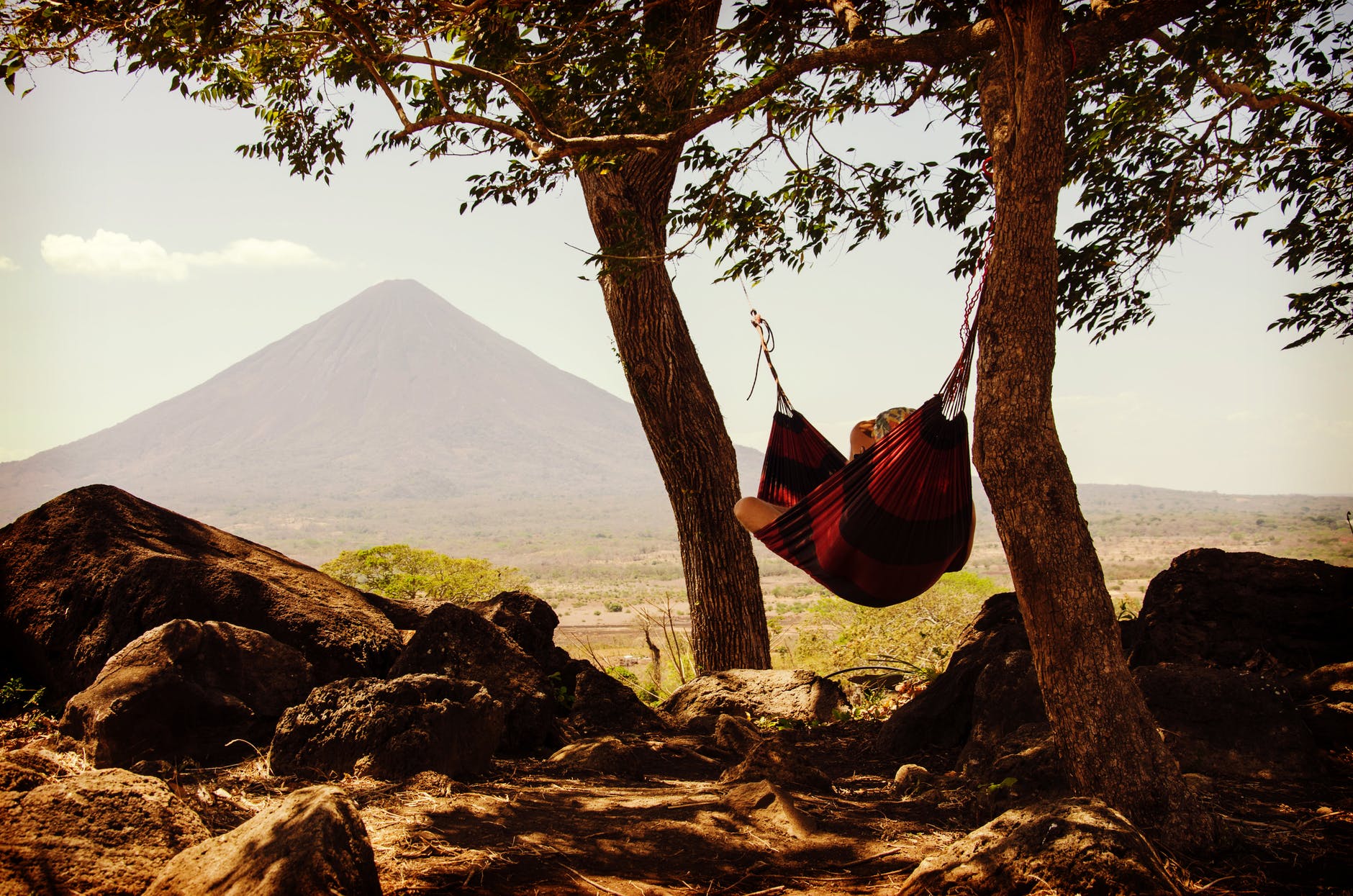If you’re considering spending a night in a hammock, there are a few things you should know. For most people, occasional napping in a hammock is considered safe. But if you’d like to do it nightly, talk to a doctor first. The practice might cause side effects like back pain or poor posture.
That said, many people find that sleeping in a hammock is incredibly comfortable and relaxing. If you decide to give it a try, make sure your hammock is set up properly and be sure to use proper bedding (a blanket or sleeping bag). Follow these tips and you’ll be sure to have sweet dreams.
Can you put a sleeping pad in a hammock?
Yes, you can certainly put a sleeping pad in a hammock! In fact, many people find that doing so is quite comfortable. There are a few things to keep in mind, however.
First, make sure that your sleeping pad is the right size for your hammock. You don’t want it to be too big or too small.
Second, when you’re putting your sleeping pad in the hammock, take care to center it evenly. This will help ensure that you’re comfortable and supported throughout the night.
Finally, if you’re using an inflatable sleeping pad, be sure to use a foot pump (rather than mouth) to inflate it; this will help prevent moisture from building up inside the mattress and making it uncomfortable to sleep on.
Can you sleep in a hammock anywhere?
Yes, you can sleep in a hammock anywhere! Just look for two sturdy objects to tie your hammock to, and you’re good to go.
Of course, some landscapes are better suited for hammock camping than others. For instance, high mountains or featureless plains probably wouldn’t make the best locations.
But in general, as long as you can find two points to anchor your hammock, you can enjoy a cozy night’s sleep almost anywhere.
How do you cold camp in a hammock?
Cold weather camping in a hammock can be a bit tricky, but with the right preparation it can be a great experience. One of the most important things to do when cold weather camping in a hammock is to make sure you have a good underquilt.
An underquilt is a fitted piece of insulation that goes underneath your hammock. It helps to keep you warm by trapping heat from your body and preventing it from escaping into the colder air outside.
A well-fitted underquilt will make all the difference in whether or not you enjoy cold weather camping in your hammock. Be sure to take the time to find an underquilt that fits snugly around your hammock and provides enough insulation for the temperatures you’ll be encountering.
What temperature can you sleep in a hammock?
While 60-degree weather may be ideal for sleeping in a tent with a sleeping bag, you’ll probably feel pretty cold at night when sleeping in a traditional nylon hammock.
The optimum temperature for hammocking is actually 65-70 degrees. So, if you’re planning on spending the night in your hammock, make sure the forecast includes mild temperatures.
Can sleeping in a hammock damage your back?
Assuming you’ve set up your hammock properly, sleeping in a hammock is safe! You’re actually much less likely to toss and turn in a hammock thanks to how they hold you. In fact, that’s also why a hammock won’t hurt your back, either.
What is the correct way to lay in a hammock?
If you’re looking for the most comfortable way to enjoy your hammock, forget about lying down in the middle. The best way to do it is by putting your head to one side and your legs to another, forming a diagonal with your body. This helps open up the fabric of the hammock so you can lie comfortably without sinking in the middle.
Is there a proper way to sleep in hammocks?
There definitely is a proper way to sleep in hammocks! When positioned correctly (a flat, diagonal lay rather than a “banana”-shaped lay”), a hammock puts your body into a natural sleeping position with your head slightly elevated above the rest of your body. Other benefits of sleeping in a hammock include the potential to fall asleep more quickly.
Is there a wrong way to sleep in a hammock?
There’s no wrong way to sleep in a hammock – as long as you’re comfortable, you’re doing it right! Some people like to sleep on their side, while others find it more comfortable to sleep on their back.
There are even some folks who swear by sleeping in a hammock like they would in a regular bed. Whatever works for you is the best way to do it.
Of course, there are a few things to keep in mind when sleeping in a hammock. Make sure the area around your hammock is clear of any obstacles that could trip you up if you roll out during the night.

How do you keep a hammock warm at night?
There are a few ways to keep your hammock warm at night. One is to simply wear warmer clothing. Another is to insulate the bottom of your hammock with a foam sleeping pad, an insulated inflatable sleeping pad, or an insulated quilt.
The most important thing is to make sure that you don’t have any gaps in your insulation. If there are gaps, cold air will seep in and you’ll lose heat. So it’s important to seal up any openings as best you can.
One way to do this is to put your quilt over the top of your hammock so that it hangs down on all sides. This will help trap heat inside and keep the cold air out. Another option is to use an underquilt, which is essentially an insulated blanket that goes underneath your hammock. This will also help keep you warm by trapping heat and preventing cold air from coming up from below.
Can you hammock in the cold?
Yes, you can absolutely go hammock camping in the winter! In fact, hammocks are often best suited for cold-weather camping in comparison to tents. This is because you’re up and away from the ground in a hammock, which keeps you away from the snow and allows you to retain your warmth.
Is there a right and wrong way to sleep in a hammock?
Yes, there is a right and wrong way to sleep in a hammock. Sleeping in a hammock can be extremely comfortable, but only if you do it correctly. The wrong way to sleep in a hammock will result in an uncomfortable night’s sleep, or worse, an injury.
Here are some tips for sleeping in a hammock the right way:
– Make sure the hammock is level. If it’s not level, you’ll end up rolling out of it during the night.
– Don’t put the Hammock too low to the ground. This will make it harder to get into and out of, and you’re more likely to roll out of it during the night. – Use a blanket or sleeping bag designed for Hammocks. These have special straps that keep them from slipping off during the night. Regular blankets and sleeping bags can slip off easily, leaving you cold and exposed during the night.
Can you sleep overnight in a hammock?
If you’re thinking about spending a night in a hammock, there are a few things to keep in mind. First, it’s important to understand that while sleeping in a hammock occasionally is considered safe for most people, doing it every night may come with some risks.
For example, you might experience back pain or poor posture if you sleep in a hammock nightly. So if you’re considering making this your regular sleeping arrangement, it’s best to speak with a doctor first to make sure it’s right for you.
In general, however, sleeping in a hammock can be a relaxing and enjoyable experience – as long as you take the necessary precautions. Make sure the area around your hammock is clear of any obstacles, and consider using mosquito netting to protect yourself from insects. And if possible, try to find a spot where you’ll be sheltered from the elements like wind or rain. With these considerations in mind, spending a cozy night in your hammock can be an incredibly peaceful way to rest.
How do you lay a hammock diagonally?
Laying a hammock diagonally is actually quite simple! Just follow these easy steps and you’ll have it done in no time:
1. Find two trees or other strong support structures that are about 10-15 feet apart.
2. Tie one end of your hammock to one of the trees using a sturdy knot. Do the same with the other end and the other tree.
3. Once both ends are secure, adjust the slack in the hammock until it’s nice and tight. You don’t want it too loose or else you’ll risk falling out!







